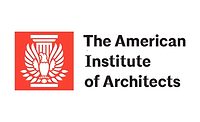AIA 2030 Commitment Report Findings Emphasize Need for Climate Action

Washington, D.C. -- Following the American Institute of Architects (AIA) announcement of the approval of a landmark resolution to engage the architectural profession in fighting climate change, a new report reveals why architects and engineers will need to redouble their efforts to reach 2030 Commitment goals.
“The findings of this new report underscore why it is imperative that the AIA make climate change a number one priority,” said Robert Ivy, FAIA, AIA executive vice president and CEO. “Architects are uniquely positioned to have a significant impact on climate action. AIA is committed to rallying the profession so that together we can make progress towards our net-zero carbon goals by 2030. It’s critical that the architecture, engineering and construction industries come together to take action on this issue today.”
The report—"2030 by the Numbers: The 2018 Summary of the AIA 2030 Commitment"—amalgamates predicted energy use data in buildings from the 252 firms participating in the 2030 Commitment. Data from the latest report shows participating architects, engineers and owners are making progress to reduce the carbon footprint of buildings, but are falling short of program targets. In 2018, firms were targeting a 70% reduction in predicted energy use from the original baseline. Data from the new report shows that only a 46% reduction has been achieved.
Despite this shortfall, the report also points to progress. The data shows that the projects from the 252 participating firms would reduce $3.3 billion in operating costs and eliminate 17.7 million metric tons of CO2 emissions, which is equivalent to removing 3.7 million passenger vehicles from the road for a year.
AIA and its members are working to improve these results in an effort to meet 2030 Commitment targets. Recently, the AIA announced a landmark initiative to define immediate and long-term efforts to engage the architectural profession in climate action. Currently, the Institute is establishing goals to support mitigation and adaptation using the tenets of the comprehensive and holistic COTE Top Ten framework, now known as the AIA Framework for Design Excellence. Initially, AIA will focus its efforts on designing for energy, economy, and equitable communities. Additionally, the Institute will continue to encourage participation in the AIA’s 2030 Commitment and will work to develop new programs and resources that will support architects in fighting climate change.
For more information, visit www.aia.org.
Looking for a reprint of this article?
From high-res PDFs to custom plaques, order your copy today!



